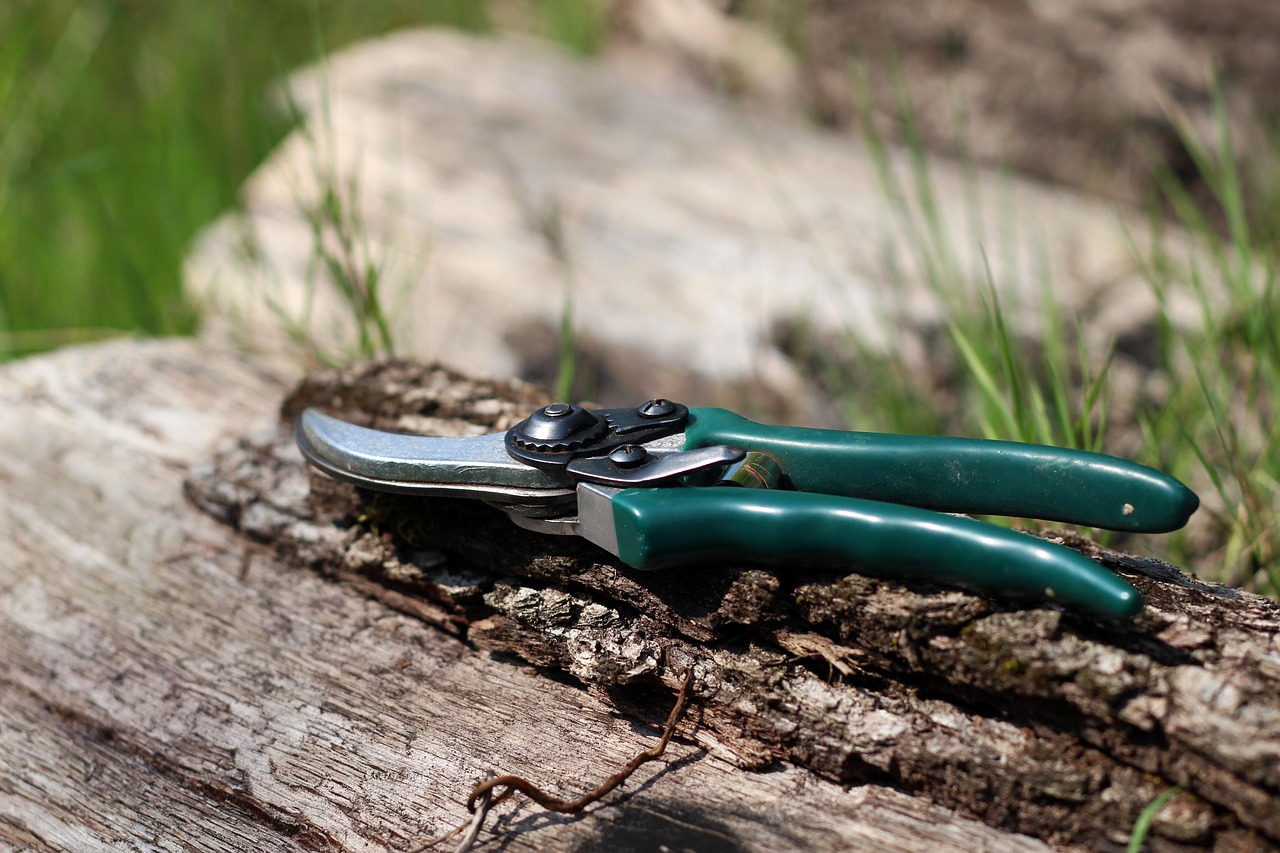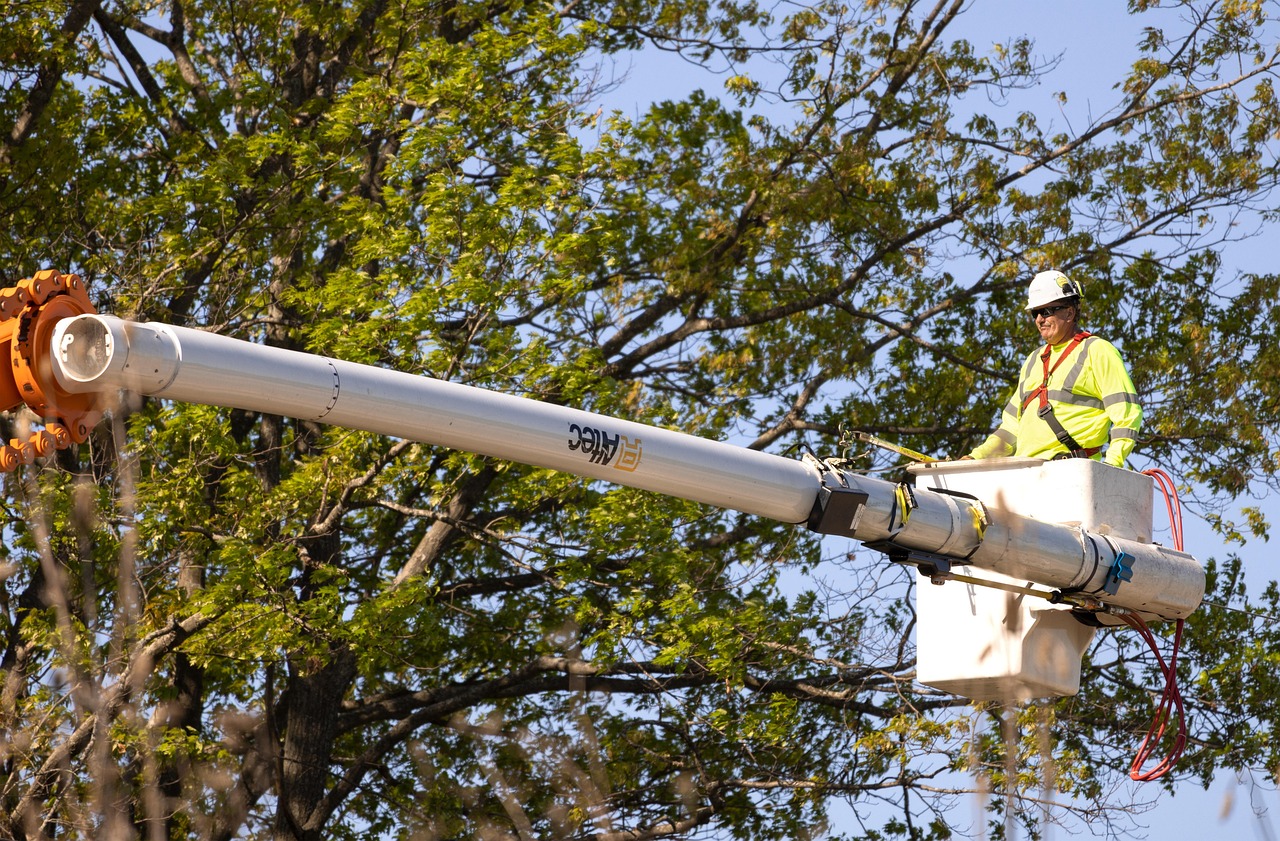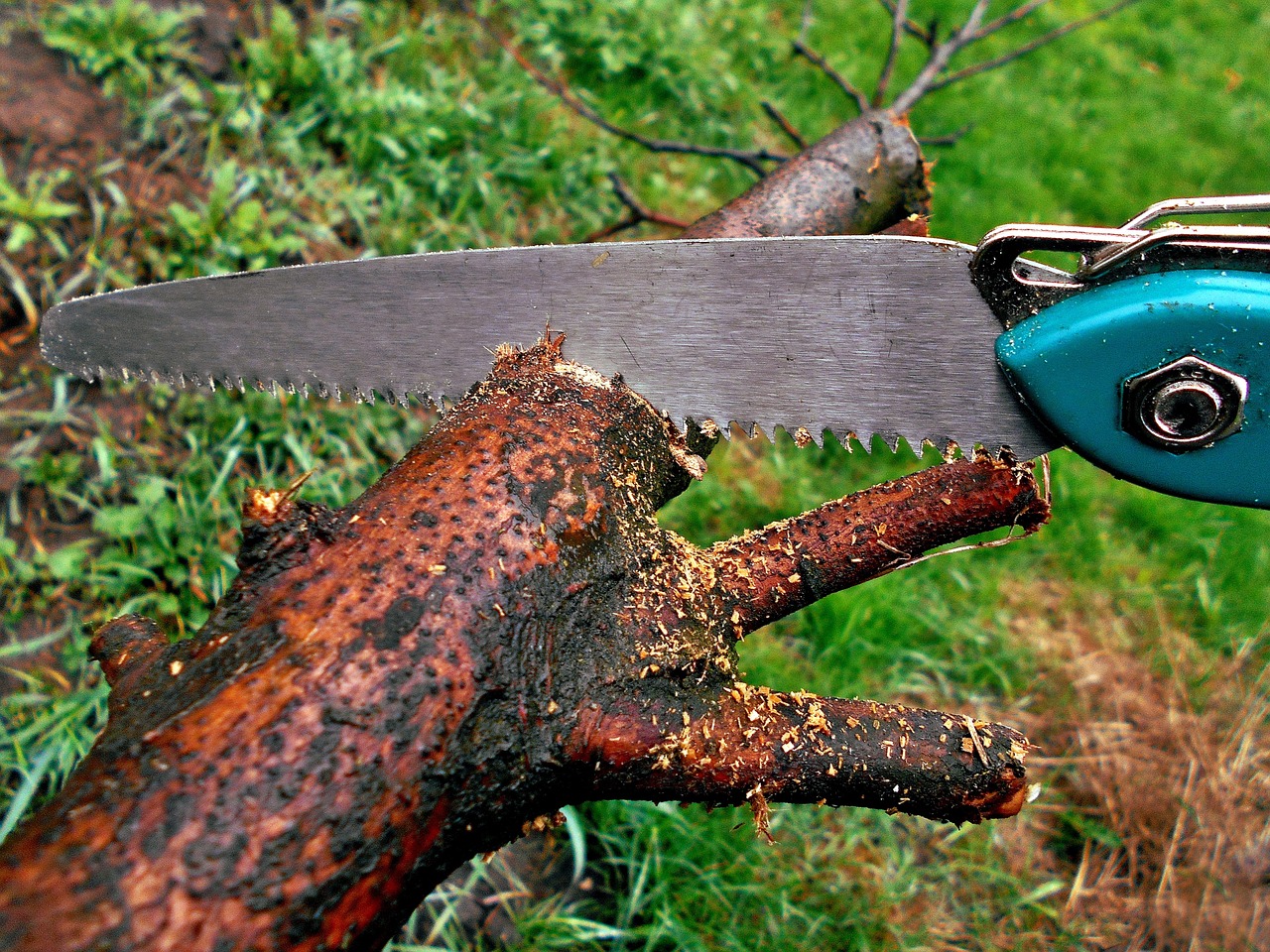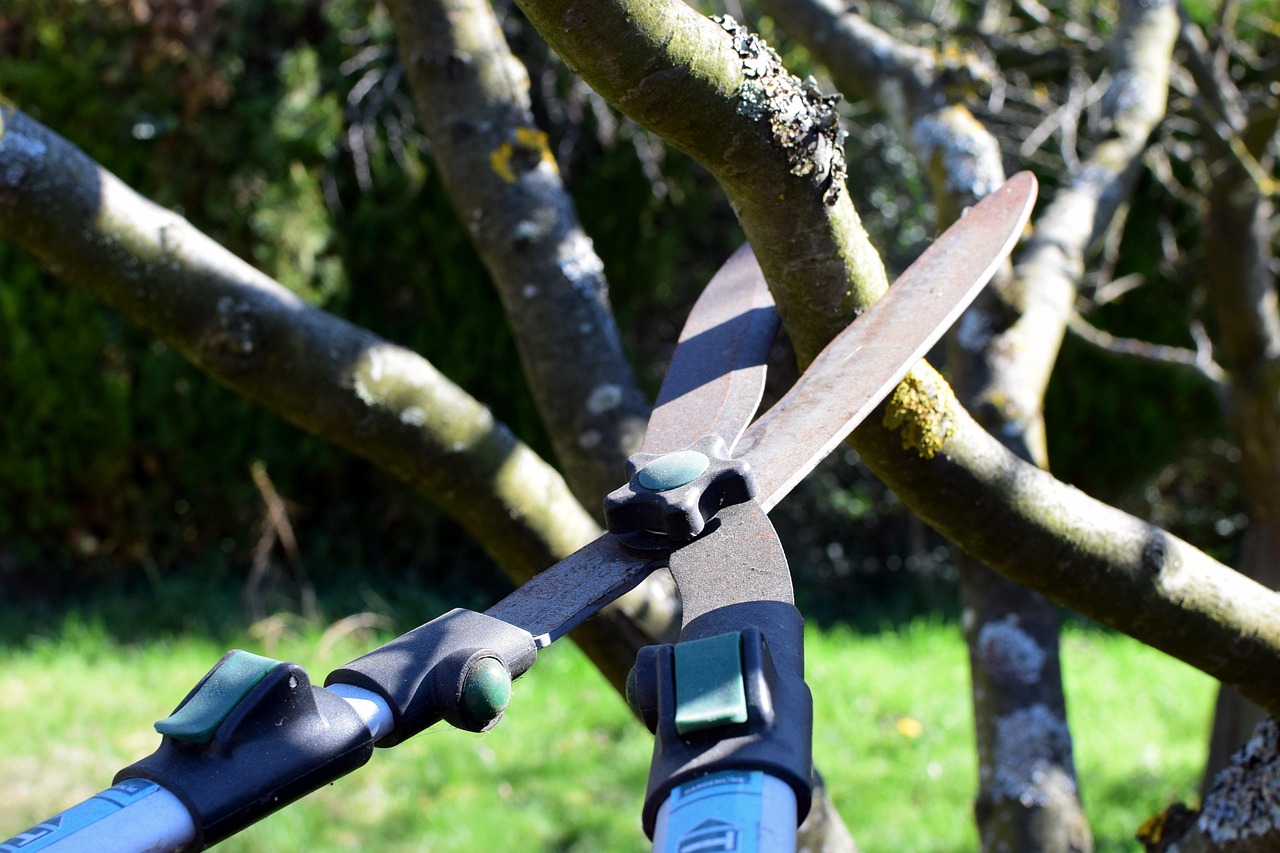Pruning trees to frame a specific landscape view enhances the visual appeal of your property. By selectively removing branches, you can create a clear sightline, highlight focal points, and improve the overall aesthetics of the landscape.
Landscaping is an art that involves careful planning and execution. One of the most effective techniques in landscaping is tree pruning. This process not only maintains the health of trees but also allows homeowners to manipulate their surroundings to achieve desired views. When done correctly, pruning can create a beautiful frame for various landscape elements such as gardens, water features, or scenic vistas.

Understanding the principles of tree pruning is essential for achieving the best results. The main goal is to enhance sightlines while ensuring that trees remain healthy and robust. Pruning at the right time and using the correct techniques can significantly impact the appearance of your landscape.
Benefits of Pruning for Landscape Views
Pruning trees offers numerous advantages that go beyond aesthetics. Here are some key benefits:
- Improved Visibility: Pruning removes obstructive branches, allowing for unobstructed views of your landscape.
- Enhanced Light Penetration: By thinning out dense foliage, more sunlight reaches the ground. This encourages growth in surrounding plants.
- Healthier Trees: Regular pruning removes dead or diseased branches, promoting overall tree health.
- Control Over Tree Shape: Pruning allows you to shape trees to fit your desired aesthetic vision.
Key Considerations Before Pruning
Before grabbing your pruning shears, consider the following factors:

- Tree Species: Different species have unique growth patterns and pruning requirements. Research your trees to understand their specific needs.
- Time of Year: The best time to prune varies by species. Late winter or early spring is often ideal for many trees.
- Tools Required: Ensure you have the right tools for the job. Sharp, clean tools minimize damage to the tree and reduce the risk of infection.
- Safety Precautions: Always prioritize safety. Use ladders or lifts when necessary, and wear protective gear.
How to Prune Trees for Framing Views
To effectively prune trees for framing a landscape view, follow these steps:
1. Assess Your Landscape
Begin by evaluating your landscape. Identify key focal points you wish to highlight. This could be a beautiful garden, a sculpture, or a stunning view of nature.
2. Determine Which Branches to Remove
Selectively choose branches that obstruct these focal points. Focus on branches that are too low or those that detract from the overall view.

3. Make Clean Cuts
When cutting, aim for clean cuts just above a node or leaf bud. This promotes healthier regrowth and reduces the risk of disease.
4. Step Back and Evaluate
After each cut, step back and re-evaluate the view. Ensure that you are achieving the desired framing without over-pruning.
Common Mistakes to Avoid
While pruning can be beneficial, there are common mistakes to avoid:

| Error | Description |
|---|---|
| Over-Pruning | Removing too many branches can stress the tree and impact its health. |
| Poor Timing | Pruning at the wrong time can disrupt the tree’s growth cycle. |
| Neglecting Tree Species Needs | Not all trees require the same pruning approach; understanding species is crucial. |
By paying attention to these details, you can effectively prune trees to enhance your landscape view while maintaining their health and vitality.
The art of pruning takes practice and knowledge. With time, you will develop an eye for which branches to cut and how to create frames that enhance your outdoor spaces. Remember that each tree is unique, so take the time to understand its specific needs and characteristics.
Understanding Tree Growth and Pruning Techniques
To successfully prune trees for framing specific landscape views, it is essential to understand tree growth patterns and the techniques involved in pruning. Each species of tree responds differently to pruning, and knowing the right methods can make a significant difference in the health and appearance of your landscape.
Tree Growth Patterns
Trees grow in various ways depending on their species, age, and environmental conditions. Understanding these growth patterns helps determine how to prune effectively. Here are some key factors to consider:
- Growth Rate: Some trees grow quickly while others have a slow growth rate. Fast-growing trees may require more frequent pruning.
- Branch Structure: Trees have different branch structures, which can affect how they frame views. For example, some trees have a wide canopy, while others have an upright growth habit.
- Seasonal Changes: Trees may exhibit different growth patterns during various seasons. Spring often brings new growth, while fall may showcase vibrant colors before leaf drop.
Common Pruning Techniques
Several pruning techniques can be utilized based on your goals and the type of tree being pruned. Here are some common methods:
- Thinning: This involves removing select branches to allow light and air to penetrate the canopy. Thinning encourages healthy growth and can enhance the view.
- Heading: This technique shortens branches by cutting them back to a bud. It helps control the size of the tree and can create a more refined shape.
- Restoration Pruning: Used for trees that have been neglected or damaged, this technique focuses on removing dead or dying branches while encouraging new growth.
- Reduction Pruning: This method reduces the size of a tree while maintaining its natural form. It is particularly useful for trees that are too large for their location.
When to Prune Trees
The timing of pruning is crucial for achieving optimal results. Different trees have specific times when pruning will be most effective. Here are some general guidelines:
Deciduous Trees
For deciduous trees, late winter or early spring is often the best time to prune. This period allows you to see the tree’s structure without leaves, making it easier to identify which branches need removal.
Evergreen Trees
Evergreen trees can be pruned in late winter or early spring as well. However, some species may benefit from light pruning during summer to maintain their shape without causing stress.
Flowering Trees
The timing for flowering trees depends on whether they bloom on old or new wood. Trees that flower in spring should be pruned right after blooming to avoid cutting off flower buds. In contrast, those that bloom in summer can be pruned in late winter or early spring.
The Tools of the Trade
Having the right tools is essential for effective pruning. Here are some commonly used tools:
| Tool | Description |
|---|---|
| Pruning Shears | Ideal for cutting small branches and stems, providing clean cuts. |
| Loppers | Long-handled tools used for cutting larger branches that are out of reach. |
| Saws | Used for cutting thick branches; both hand saws and power saws can be effective. |
| Pole Pruner | A tool with a saw and/or shears on a long pole, designed for high branches. |
| Safety Gear | Includes gloves, goggles, and helmets to protect against falling debris. |
Using appropriate tools not only makes the job easier but also ensures cleaner cuts, which can help prevent disease in the tree.
Caring for Pruned Trees
After pruning, it is crucial to care for your trees properly to promote healing and growth. Here are some tips for post-pruning care:
- Avoid Over-Watering: After pruning, ensure not to over-water your trees as this can lead to root rot.
- Monitor for Pests: Keep an eye out for signs of pests or diseases that may take advantage of the tree’s stress from pruning.
- Nourish the Soil: Consider adding mulch or organic matter around the base of the tree to retain moisture and provide nutrients.
- Observe Growth: Watch for new growth in the following weeks. Healthy shoots indicate that the tree is recovering well from pruning.
Caring for your trees after pruning is just as important as the pruning process itself. By following these guidelines, you can ensure that your trees thrive and continue to frame your landscape beautifully.
Designing Landscape Views with Pruned Trees
Pruning trees not only enhances their health but also plays a crucial role in landscape design. Thoughtful pruning can serve to highlight specific views, guide the eye, and create a harmonious environment. Understanding how to strategically prune can transform your outdoor spaces into picturesque settings.
Creating Visual Focal Points
When designing a landscape, visual focal points are essential. These points draw the viewer’s attention and create interest. Trees can be pruned to frame these focal points effectively. Here are some strategies:
- Identify Key Features: Determine what elements in your landscape you want to highlight, such as a water feature, sculpture, or garden bed.
- Use Layering: Prune trees in layers, allowing lower branches to frame the view while higher branches provide a backdrop. This creates depth and dimension.
- Consider Color and Texture: Choose trees that complement the colors and textures of surrounding plants. Pruning can help emphasize these characteristics.
Guiding the Eye with Tree Placement
The placement of trees within a landscape can significantly influence how views are perceived. Strategic pruning can enhance this effect:
- Align Trees with Pathways: Prune trees that line pathways to create a clear visual corridor, guiding visitors through the landscape.
- Frame Entry Points: Use trees to frame entrances to gardens or homes. Properly pruned branches can create a welcoming feel.
- Create Canopies: Prune to form canopies over seating areas or walkways, providing shade and a sense of enclosure.
The Role of Seasonal Changes in Landscape Design
Different seasons bring various colors, shapes, and textures to trees. Pruning should be adjusted according to seasonal changes to maximize visual appeal.
Spring and Summer Considerations
During spring and summer, trees are typically full of leaves and flowers. Pruning during this time may affect blooming. Here are some tips:
- Spring Bloomers: For trees that bloom in spring, prune immediately after flowering to avoid cutting off next year’s buds.
- Summer Growth: In summer, light pruning can help maintain shape without stressing the tree. Focus on removing any dead or diseased branches.
Fall and Winter Considerations
The fall season marks the transition of trees as they prepare for winter dormancy. This is an excellent time for more extensive pruning:
- Fall Pruning: As leaves drop, it becomes easier to see the tree’s structure. Fall is a good time to prune deciduous trees that require significant shaping.
- Winter Dormancy: Winter is ideal for pruning many trees as they are dormant. This reduces stress on the tree and allows for optimal healing come spring.
Environmental Considerations in Pruning
While aesthetics are important, considering the environmental impact of tree pruning is equally vital. Trees play a significant role in supporting ecosystems.
Biodiversity and Wildlife
Healthy trees contribute to biodiversity. When pruning, keep in mind how your actions affect local wildlife:
- Nesting Habitats: Many birds nest in trees. Avoid pruning during nesting season to protect these habitats.
- Pollen and Nectar Sources: Certain trees provide essential food sources for pollinators. Consider leaving some branches intact to support these creatures.
Climate Resilience
Pruning can enhance a tree’s ability to withstand climate changes. Well-maintained trees have better resilience against storms and diseases:
- Structural Integrity: Regular pruning helps maintain strong branch structures, reducing the risk of breakage during heavy winds.
- Disease Management: By removing dead or diseased branches, you help prevent the spread of infections that could threaten the entire tree.
Engaging Professionals for Large-Scale Pruning
If you have large trees or an extensive landscape, engaging professional arborists may be beneficial. Professionals bring expertise in tree health and safety, ensuring that pruning is done correctly.
Benefits of Hiring Professionals
- Expert Knowledge: Arborists understand tree biology and can assess which branches to prune for optimal health and aesthetics.
- Safety First: Working with large trees can be dangerous. Professionals have the experience and equipment to do the job safely.
- Long-Term Care Plans: Arborists can provide ongoing care recommendations, helping you maintain your landscape over time.
The decision to prune should be based on a careful assessment of your goals for your landscape. By combining artistic vision with knowledge of tree biology, you can create stunning views that enhance your outdoor living space.
Enhancing Aesthetics with Pruned Trees
Pruning trees is not just a maintenance task; it is an integral part of landscape design that can dramatically alter the appearance and feel of your outdoor spaces. By considering the visual aspects of pruning, you can effectively enhance the aesthetics of your garden or yard.
Balancing Nature and Design
A successful landscape combines natural elements with thoughtful design. Pruning allows you to strike this balance. It is important to consider how each tree fits into the overall design scheme:
- Natural Flow: Trees should complement the flow of the landscape. Use pruning to maintain their natural shape while ensuring they do not obstruct pathways or views.
- Seasonal Interest: Different trees provide varying colors and textures throughout the seasons. Prune to highlight these seasonal changes, allowing your landscape to evolve beautifully.
- Unity in Diversity: If you have multiple tree species, ensure that your pruning practices create a unified look, promoting harmony among different plants.
Using Technology for Better Pruning
Modern technology can also aid in effective tree pruning. Here are some innovative tools and techniques that can assist you:
- Tree Health Monitoring Systems: These systems use sensors to monitor tree health, helping identify which trees need pruning and when.
- Drones: Drones can be used to survey large areas, allowing you to assess tree canopies and plan pruning more effectively.
- Mobile Apps: There are various landscaping apps that assist in planning your landscape design, including reminders for pruning schedules.
Community and Urban Landscapes
In urban settings, trees play a crucial role in improving air quality and providing shade. Effective pruning is essential for ensuring that urban trees thrive amidst concrete and buildings. Here are some aspects to consider in urban landscapes:
- Safety Regulations: Always be aware of local regulations regarding tree pruning, especially for trees planted in public spaces.
- Infrastructure Considerations: Urban trees may need special attention to avoid interference with power lines and buildings. Prune accordingly to maintain safety and accessibility.
- Civic Engagement: Engage with local community groups focused on urban forestry, as they often provide resources and support for tree care initiatives.
Final Thoughts
Pruning trees to frame specific landscape views is a rewarding endeavor that combines artistry with horticultural knowledge. By understanding tree growth patterns, utilizing appropriate techniques, and considering environmental factors, you can create beautiful outdoor spaces that enhance both aesthetics and functionality.
Remember that each tree is unique, requiring tailored approaches to pruning. Whether you choose to do the work yourself or engage a professional arborist, the key lies in understanding your landscape’s needs. Properly pruned trees not only enhance the beauty of your property but also contribute positively to the surrounding ecosystem.
As you embark on your tree pruning journey, keep in mind the importance of maintaining healthy trees and supporting local wildlife. With careful planning and execution, you can transform your landscape into a stunning oasis that frames beautiful views and offers a sanctuary for both you and nature.
In summary, effective tree pruning integrates beauty, health, and environmental sustainability. Embrace the art of pruning as an essential skill for any landscape enthusiast, allowing you to create lasting impressions through your outdoor spaces.
